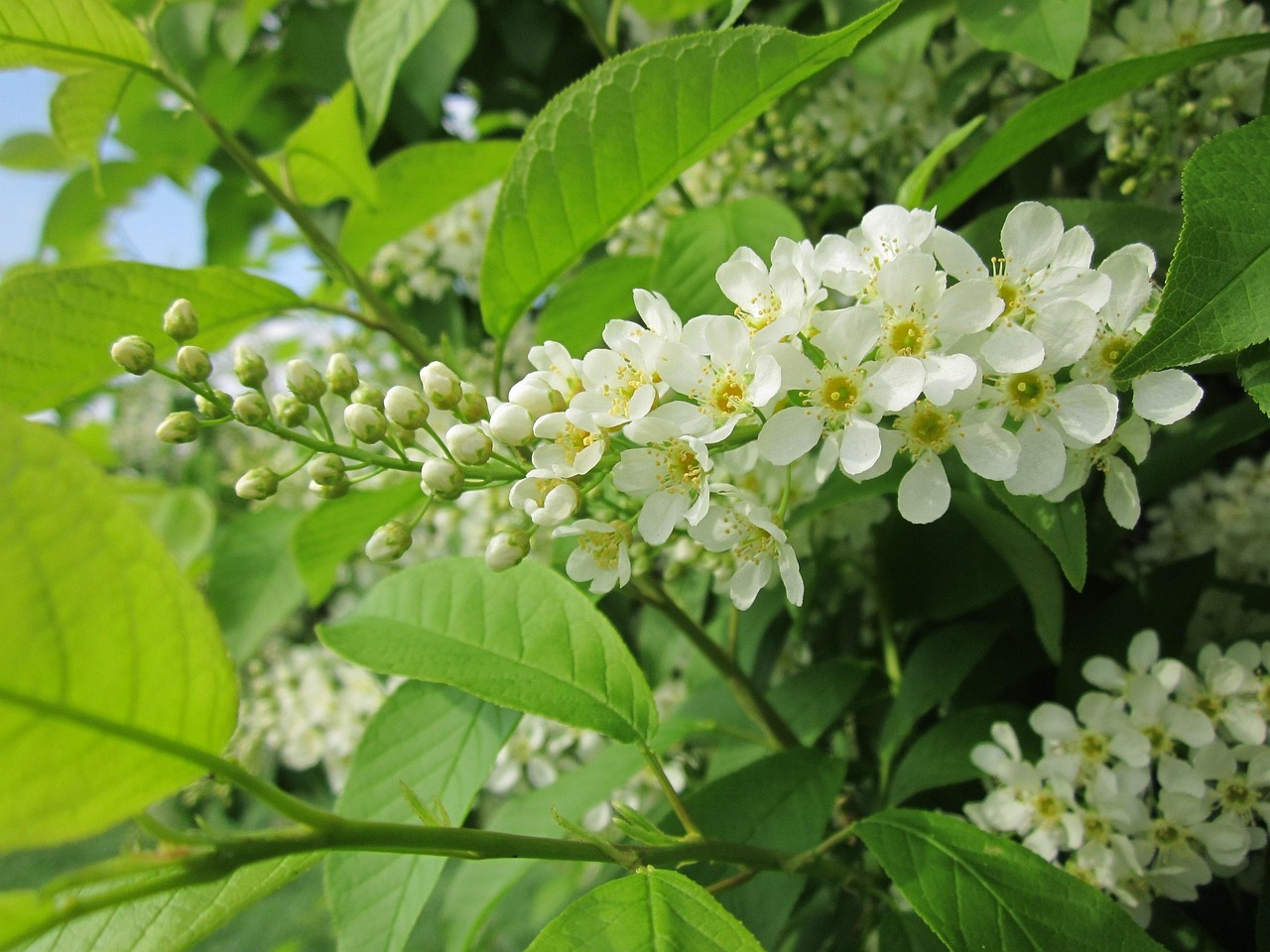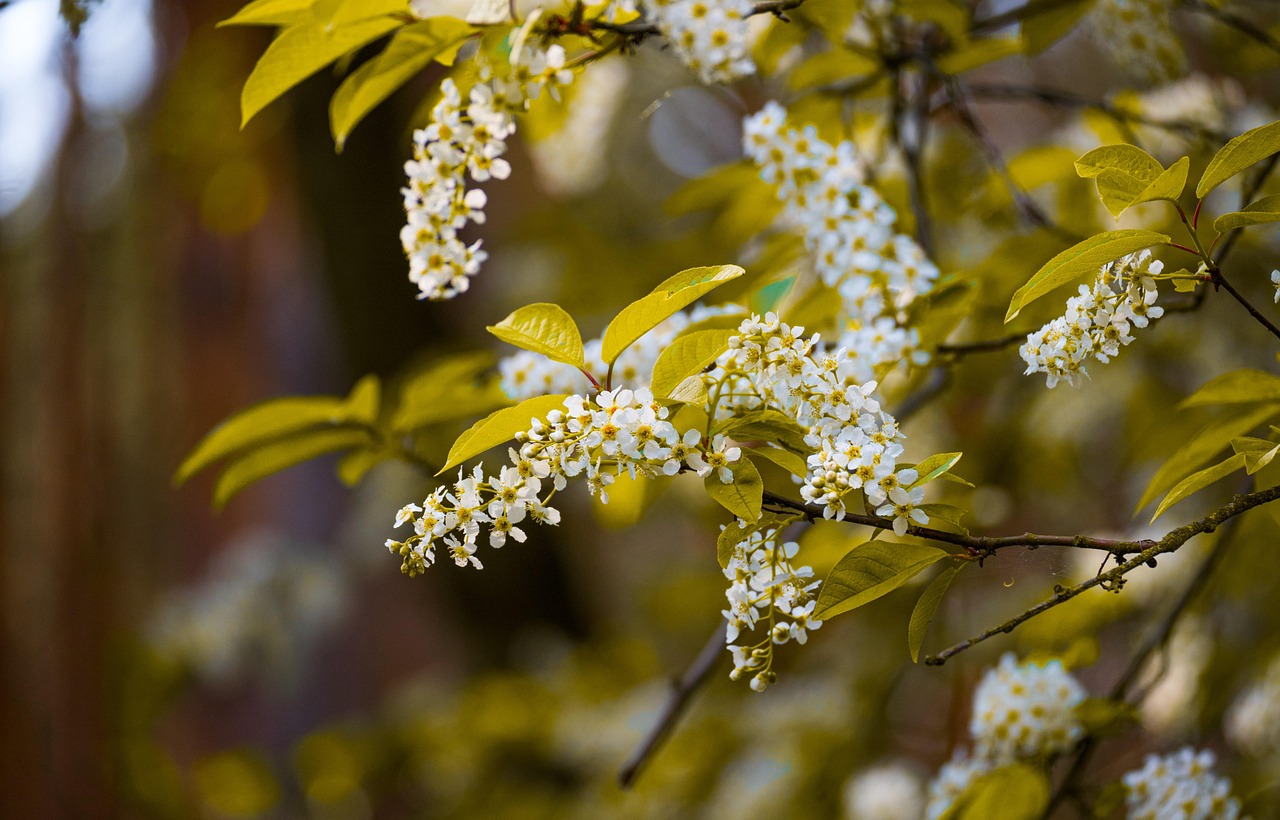The Hackberry tree (Celtis occidentalis) can thrive in tough soil conditions, typically displaying a moderate growth rate of 12 to 24 inches per year. However, growth may be slower in extremely poor or compacted soils, where it can adapt yet still show resilience.
Hackberry trees are native to North America and are known for their ability to withstand various environmental conditions. They are often found in a range of habitats, from dry plains to wetter areas. The tree is particularly valued for its hardiness and adaptability to different soil types, including clay, sandy soils, and alkaline conditions.

Understanding the growth rate of Hackberry trees in tough soil conditions is essential for urban forestry, landscaping, and ecological restoration projects. These trees can offer shade, wildlife habitat, and aesthetic appeal to landscapes even when the soil quality is less than ideal. Their growth rate can vary significantly based on several factors, including soil quality, moisture levels, and local climate conditions.
Growth Rate Influencing Factors
Several factors influence the growth rate of Hackberry trees in challenging soil conditions:
- Soil Quality: Poor soil quality can slow down the growth of Hackberry trees. Nutrient availability plays a significant role in their overall health.
- Water Availability: Adequate moisture is crucial. Trees in arid conditions may grow slower than those in areas with proper irrigation.
- Sunlight Exposure: Hackberry trees thrive in full sun. Insufficient sunlight can hinder their growth rate.
- Competition: Nearby plants or trees may compete for resources, impacting the growth of Hackberry trees.
Hackberry trees are resilient and can grow in challenging conditions where other species may struggle. However, their growth rate can be significantly affected by the following factors:

Soil Types and Their Impact
The type of soil directly influences the growth rate of Hackberry trees. Here are some common soil types and their effects:
| Soil Type | Description | Impact on Growth Rate |
|---|---|---|
| Clay Soil | Heavy and compacted soil with poor drainage. | Slower growth due to water retention issues. |
| Sandy Soil | Light and well-draining soil. | Moderate growth; requires more frequent watering. |
| Silt Soil | Fertile soil with good water retention. | Optimal growth rates due to nutrient availability. |
| Alkaline Soil | Soil with a high pH level. | Can affect nutrient uptake; moderate growth. |
In addition to soil type, soil compaction can also affect the growth rate of Hackberry trees. Compacted soils restrict root expansion and limit access to necessary nutrients and water. Trees planted in urban areas often face this challenge, which can lead to stunted growth.
Adaptation Strategies
Hackberry trees have developed several strategies to adapt to tough soil conditions. These include:

- Deep Root System: The ability to develop a deep root system allows Hackberry trees to access moisture and nutrients from deeper layers of soil.
- Drought Resistance: Once established, Hackberry trees can tolerate periods of drought, which helps them survive in arid environments.
- Nitrogen Fixation: Some Hackberry trees have symbiotic relationships with nitrogen-fixing bacteria in their root nodules, improving nutrient availability.
This adaptability makes the Hackberry tree a valuable plant species for various landscaping and restoration projects. By selecting appropriate planting sites and understanding their needs, gardeners and landscape architects can successfully incorporate these trees into challenging environments.
Optimal Growing Conditions
While Hackberry trees are known for their resilience, certain growing conditions can enhance their growth rate even in tough soil. Understanding these optimal conditions can help ensure that these trees flourish. Key factors include soil type, moisture levels, sunlight exposure, and proper spacing.
Soil Preparation
Before planting Hackberry trees, it’s essential to prepare the soil adequately. Here are some steps to improve soil conditions:

- Testing Soil: Conduct a soil test to determine pH and nutrient levels. This information will guide you in making necessary amendments.
- Aeration: Aerate compacted soil to improve air circulation and drainage. This process allows roots to expand and access vital nutrients.
- Amendments: Incorporate organic matter, such as compost, to enrich the soil. This addition helps improve fertility and moisture retention.
- Mulching: Apply a layer of mulch around the base of the tree. This practice retains moisture and suppresses weeds.
Watering Practices
Hackberry trees require consistent moisture, especially during their early years. However, overwatering can be detrimental. Here’s how to manage watering effectively:
- Deep Watering: Water deeply and less frequently to encourage deep root growth. A general rule is to provide about 1 inch of water per week.
- Check Soil Moisture: Use a soil moisture meter or your finger to check if the soil is dry at least 2 inches below the surface before watering.
- Seasonal Adjustments: Adjust watering frequency based on rainfall and seasonal changes. During dry spells, increase watering to maintain moisture levels.
Pest and Disease Management
Hackberry trees are generally resistant to pests and diseases; however, they can still be affected by certain issues that may hinder their growth. Being proactive in managing these problems is crucial for healthy growth.
Common Pests
The following pests may impact Hackberry trees:
- Hackberry Nipple Gall Maker: This small insect creates galls on leaves, affecting photosynthesis. Regular monitoring and removal of affected leaves can help manage this pest.
- Aphids: These tiny insects can weaken trees by sucking sap. Introducing beneficial insects like ladybugs can help control aphid populations.
- Spider Mites: These pests thrive in dry conditions and can cause leaf discoloration. Increasing humidity around the tree can deter these mites.
Disease Issues
Hackberry trees may experience several diseases, including:
- Cankers: These are sunken areas on the bark that can lead to dieback. Pruning infected areas is vital for disease management.
- Leaf Spot: This fungal issue leads to brown spots on leaves. Ensuring proper air circulation through pruning can reduce the incidence of leaf spot.
- Root Rot: Often caused by overwatering or poorly drained soils, root rot can be fatal. Monitoring soil moisture is key to preventing this disease.
Growth Rate Variability
The growth rate of Hackberry trees can vary significantly based on environmental conditions. Factors such as geography, climate, and local ecology contribute to these differences.
Geographical Influence
The native range of Hackberry trees extends across various regions, from the eastern United States to parts of Canada. Here’s how geography affects growth rates:
| Region | Typical Growth Rate | Soil Characteristics |
|---|---|---|
| Eastern United States | 12-24 inches/year | Diverse soils, often fertile with good moisture retention. |
| Midwest | 10-20 inches/year | Clay and loamy soils; well-drained areas promote faster growth. |
| Semi-arid Regions | 6-12 inches/year | Poor drainage; drought conditions limit growth rates. |
This table illustrates how growth rates differ based on location and environmental factors. Understanding these regional differences is important for effective planting strategies and managing expectations for growth rates.
Climate Considerations
The climate plays a vital role in the overall health and growth rate of Hackberry trees. Key climate factors include:
- Temperature Extremes: Extreme cold or heat can stress the tree, potentially slowing growth.
- Humidity Levels: Adequate humidity supports healthy growth, while very dry conditions can lead to stunted development.
- Seasonal Changes: Seasonal variations affect water availability and nutrient uptake, directly influencing growth rates.
Cultivating a deep understanding of these aspects will guide landowners and gardeners in maximizing the growth potential of Hackberry trees, even in tough soil conditions.
Propagation Techniques
Successfully growing Hackberry trees in tough soil conditions often begins with proper propagation techniques. Understanding how to propagate these trees can enhance their growth rate and adaptability in various environments.
Seed Propagation
Seed propagation is a common method for Hackberry trees. The seeds are relatively easy to collect and germinate, making them a popular choice for planting. Here are the steps for successful seed propagation:
- Seed Collection: Collect ripe berries in late summer or early fall. The berries are usually purple to black when mature.
- Seed Preparation: Remove the fleshy part of the berries to extract the seeds. Rinse the seeds thoroughly to remove any remaining pulp.
- Cold Stratification: To improve germination rates, stratify the seeds by placing them in a moist medium and refrigerating them for 60 to 90 days.
- Sowing: After stratification, sow the seeds in a well-draining potting mix, covering them lightly, and keep the soil consistently moist.
Vegetative Propagation
Another effective propagation method is vegetative propagation, which involves taking cuttings from existing trees. This method ensures that the new trees retain the characteristics of the parent tree.
- Cutting Selection: Choose healthy, semi-hardwood cuttings that are 6 to 8 inches long, preferably taken in late spring or early summer.
- Rooting Hormone: Dip the cut end of each cutting in rooting hormone to promote root development.
- Planting: Plant the cuttings in a well-draining potting mix and water them thoroughly. Covering with a plastic bag can help maintain humidity.
- Monitoring Growth: Place the cuttings in bright, indirect sunlight and keep the soil moist until roots develop, which typically takes a few weeks.
Cultural Practices for Growth Enhancement
Cultural practices play a significant role in optimizing the growth rate of Hackberry trees in challenging soils. Implementing these practices can improve tree health and productivity.
Fertilization Strategies
Providing adequate nutrients is crucial for the growth of Hackberry trees. Here are some fertilization strategies:
- Soil Testing: Conduct regular soil tests to determine nutrient levels and deficiencies. This will guide appropriate fertilization.
- Organic Fertilizers: Utilize organic fertilizers, such as compost or well-rotted manure, to enhance soil quality and provide essential nutrients.
- Timing: Apply fertilizers in early spring as growth begins, ensuring that nutrients are available when the tree needs them most.
Pruning Techniques
Pruning is an essential cultural practice for maintaining tree health and promoting vigorous growth. Proper pruning helps improve air circulation and light penetration. Here are some key pruning techniques:
- Timing: Prune during late winter or early spring before new growth begins.
- Remove Dead or Diseased Wood: Regularly inspect the tree for any dead or diseased branches and remove them promptly.
- Crown Thinning: Thin out crowded branches to improve air circulation and reduce disease risk.
- Shaping: Shape the tree to encourage a strong central leader and evenly spaced branches for better structural integrity.
Environmental Benefits of Hackberry Trees
The Hackberry tree not only thrives in tough soil conditions but also offers numerous environmental benefits that can enhance local ecosystems. These benefits further justify their cultivation in various landscapes.
Biodiversity Support
Hackberry trees contribute significantly to local biodiversity. They provide essential habitat and food for various wildlife species. Some key points include:
- Wildlife Habitat: Hackberry trees serve as nesting sites for birds and shelter for small mammals.
- Food Source: The fruits attract birds and other wildlife, supporting diverse animal populations.
- Insect Diversity: The leaves host various insects, which in turn support insectivorous birds and other wildlife.
Erosion Control
The deep root systems of Hackberry trees help stabilize soil, making them effective for erosion control. Here are some ways they contribute to soil stability:
- Root Structure: The extensive root system prevents soil erosion by holding soil particles together, especially on slopes.
- Drought Resistance: Their ability to access deep moisture helps maintain soil structure during dry periods, reducing runoff.
Aesthetic Value
In addition to their ecological benefits, Hackberry trees add aesthetic value to landscapes. Their unique characteristics can enhance the visual appeal of gardens and parks.
- Seasonal Interest: These trees showcase beautiful foliage in autumn, turning yellow to orange before shedding leaves.
- Unique Bark Texture: The attractive mottled bark adds visual interest throughout the year, even during winter months.
- Sizable Canopy: A mature Hackberry tree provides ample shade, making it an ideal choice for parks and residential landscapes.
The combination of environmental benefits and aesthetic appeal makes Hackberry trees a valuable addition to many landscapes, particularly in regions with challenging soil conditions.
Community and Educational Benefits
Hackberry trees not only contribute to the environment and aesthetic appeal but also provide significant community and educational benefits. They play a role in enhancing community spaces and serve as valuable resources for learning.
Community Spaces
Integrating Hackberry trees into urban and community landscapes can foster a sense of connection among residents. Here are some ways they enhance community spaces:
- Shade for Gathering: The ample shade provided by mature Hackberry trees creates comfortable outdoor spaces for community gatherings, picnics, and recreational activities.
- Urban Greenery: Planting Hackberry trees along sidewalks and in parks enhances urban greenery, contributing to improved air quality and reduced heat island effects.
- Wildlife Observation: Communities can enjoy birdwatching and wildlife observation thanks to the habitat provided by these trees, promoting environmental awareness.
Educational Opportunities
Hackberry trees can serve as excellent teaching tools for schools and environmental organizations. They provide opportunities for hands-on learning about ecology, botany, and environmental stewardship. Key educational aspects include:
- Field Studies: Students can engage in field studies to observe tree growth, biodiversity, and ecosystem interactions involving Hackberry trees.
- Workshops and Seminars: Local organizations can host workshops on tree care, propagation, and the importance of native species, fostering a sense of responsibility toward nature.
- Environmental Projects: Schools can initiate tree planting projects that involve students in the process of growing and caring for Hackberry trees, instilling environmental values from a young age.
Challenges in Maintenance
Despite their resilience, Hackberry trees may face certain challenges that require attention from caregivers. Understanding these challenges is vital for ensuring their long-term health and growth.
Pest Management
Hackberry trees can fall prey to specific pests that may threaten their health. Implementing a proactive pest management strategy is essential. Some common pests include:
- Scale Insects: These pests can create a sticky residue on leaves and reduce the overall vigor of the tree. Regular monitoring and insecticidal soap applications can help control them.
- Gall Midges: While they may not directly harm the tree, they can cause galls that affect leaf appearance. Pruning affected areas can minimize their impact.
- Root Aphids: These insects can weaken trees by feeding on roots. Healthy soil practices can help mitigate their presence.
Disease Prevention
Diseases such as leaf spot or cankers can affect Hackberry trees. Preventive measures include:
- Proper Watering Techniques: Avoid overwatering to prevent root rot and fungal diseases.
- Cultural Practices: Implement good cultural practices like proper spacing and sunlight exposure to reduce disease risk.
- Regular Inspections: Conduct routine inspections for signs of disease or damage to ensure prompt action can be taken.
Final Thoughts
The Hackberry tree stands out as an exceptional species well-suited for challenging soil conditions. Its ability to adapt, coupled with its numerous environmental, aesthetic, and community benefits, makes it a vital addition to various landscapes. Proper propagation techniques, cultural practices, and ongoing maintenance can help ensure robust growth and longevity.
The resilience of Hackberry trees serves as a reminder of nature’s capacity to thrive under adverse conditions. As communities seek to enhance urban greenery and promote biodiversity, incorporating Hackberry trees into planting plans offers a sustainable solution that benefits both people and the environment.
In summary, understanding the growth rate, adaptation strategies, and care requirements of Hackberry trees empowers gardeners, landowners, and communities to make informed decisions. By embracing these trees in tough soil conditions, we can foster healthier ecosystems and create spaces that benefit future generations.
